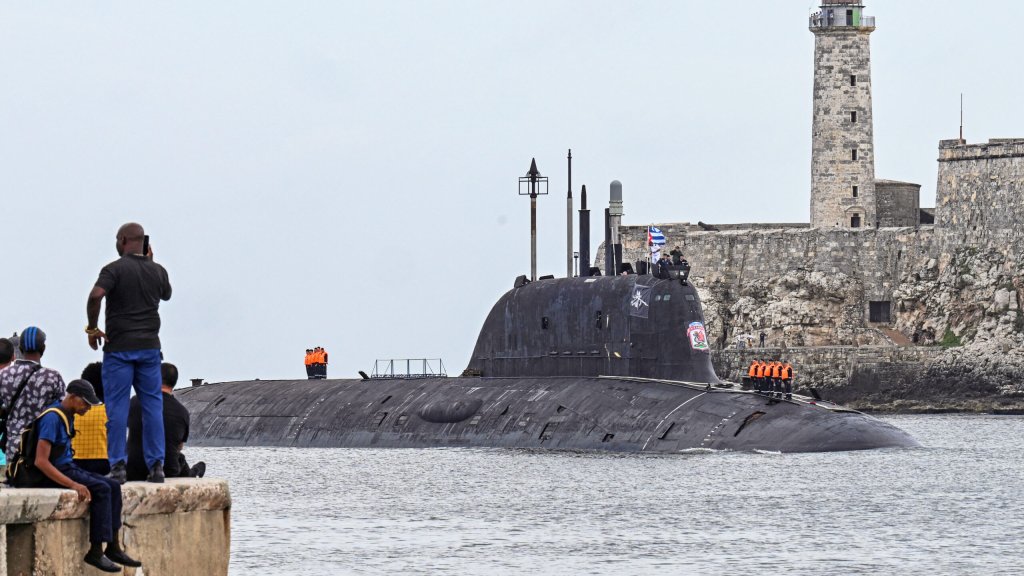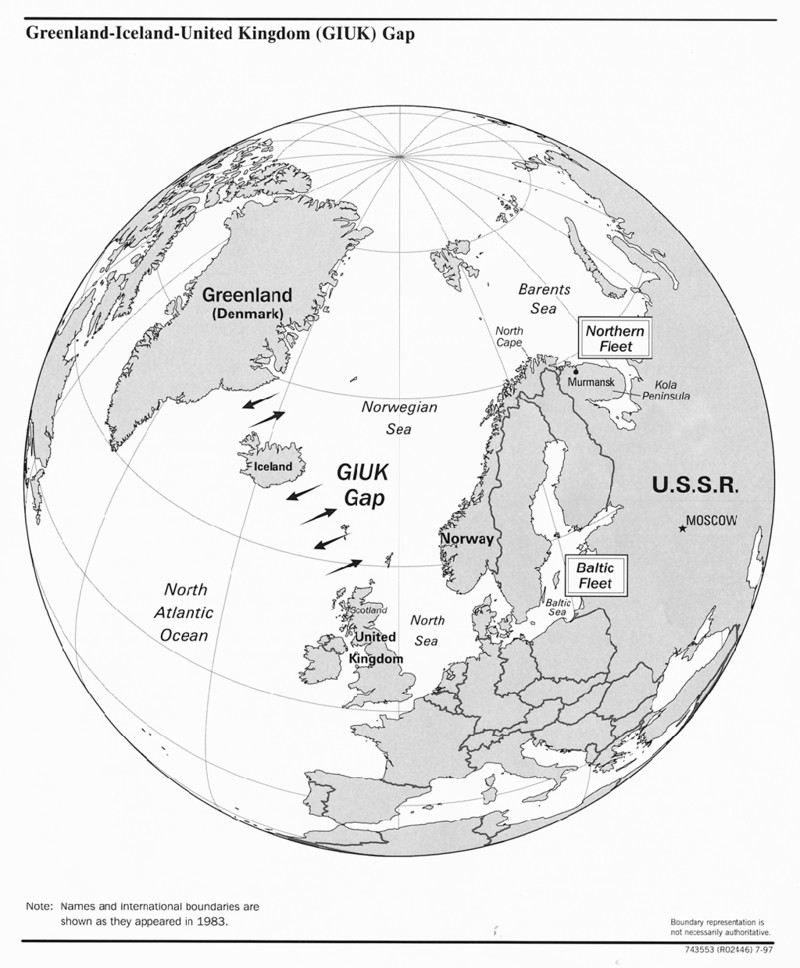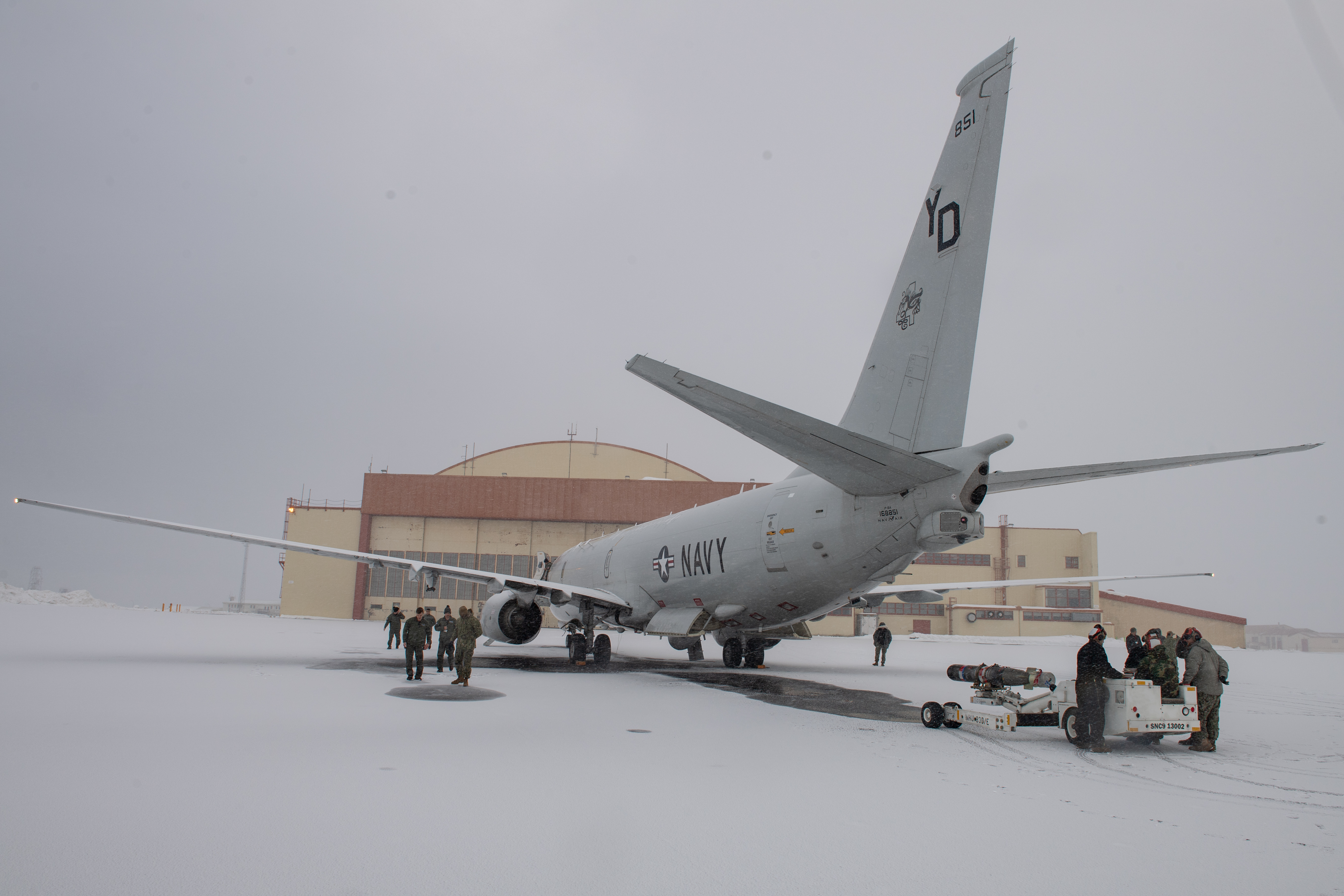As U.S. President Donald Trump continues to seek control of Greenland, the top U.S. military commander in Europe said the massive island is vital to America’s national security. The main issue, he said, is that Greenland’s geographic location makes it a key landmass from which to track Russian submarines before they have a chance to disappear into the Atlantic Ocean and potentially endanger the East Coast. You can read more about the strategic importance of Greenland in our deep dive here.
“Access to the airspace and water space found in Greenland is absolutely critical for the United States,” said U.S. Army Gen. Christopher G. Cavoli. NATO’s Supreme Allied Commander Europe (SACEUR) and head of U.S. European Command. Cavoli addressed the security value of Greenland during testimony before the Senate Armed Services Committee on Thursday. Asked about the frigid island, Cavoli made it clear he was talking about the military value of it and not the Trump administration’s policy of trying to assume Greenland from Denmark.
“The key there is it forms the western border of the Greenland, Iceland, UK (GIUK) gap, which is that body of water through which Russian submarines from the Northern Fleet in Murmansk come up and then down through that gap,” Cavoli stated. Murmansk is home to some of Russia’s most capable submarines, like the Yasen-M class nuclear-powered cruise missile carrying Kazan.
 The Russian nuclear-powered submarine Kazan, part of the Russian naval detachment visiting Cuba, arrives at Havana’s harbor, June 12, 2024. Y(AMIL LAGE/AFP via Getty Images) (Photo by YAMIL LAGE/AFP via Getty Images)
The Russian nuclear-powered submarine Kazan, part of the Russian naval detachment visiting Cuba, arrives at Havana’s harbor, June 12, 2024. Y(AMIL LAGE/AFP via Getty Images) (Photo by YAMIL LAGE/AFP via Getty Images)The threat of Russian submarines in the Atlantic has been so great that in 2021 the U.S. Navy established a dedicated anti-sub task group of Arleigh Burke-class destroyers that was officially named Task Group Greyhound, You can read more about that here. The increasing Russian submarine activity sparked a warning five years ago from a top U.S. Navy officer that the East Coast was no longer a safe haven for the sea service’s ships and submarines.
The value of the GIUK Gap is not lost on Russia. In 2019, it launched its largest drill since the Cold War, sending at least 10 submarines from Murmansk through that region.
“The goal for some of the submarines is to get as far out into the Atlantic as possible without being discovered,” Norwegian news outlet NRK reported at the time.
The entire voyage from their Northern Fleet bases in the Murmansk region was submerged.
“Russia’s goal is to show that they are able to threaten the U.S. East Coast,” the publication noted. “Russia wants to say that ‘this is our sea,’ we can do this. We are able to reach the United States… They want to test the West’s ability to detect and handle this…”
Beyond offensive maneuvers, Russian submarines could also flood into the GIUK Gap and the waters off Norway in a defensive posture to keep U.S. submarines and surface combatants from pushing northward during a crisis. This would protect strategic Russian naval ports on the Barents Sea, Russia’s ballistic missile boats patrolling the northernmost latitudes and hiding under the polar icecap, and its increasingly strategic territorial holdings in the Arctic. It could also isolate NATO allies in Northern Europe from naval assistance during a crisis.
You can read more about the importance of this swath of ocean here.
 Dating from the Cold War but still relevant today, a map of the GIUK Gap. CIA.gov
Dating from the Cold War but still relevant today, a map of the GIUK Gap. CIA.gov With all these considerations in play, Cavoli told Senators that not having a strong U.S. presence in Greenland is a dangerous prospect. It makes up part of the northern section of the GIUK gap , which is bisected by the far smaller island of Iceland. With just 200 miles between the southeastern coast of Greenland and Iceland, this an important choke point. This area of the GIUK gap is located about 1,000 miles southeast of the Pituffik U.S. Space Force Base, the only U.S. military facility on the island. Formerly named Thule Air Base, it hosts an array of early warning radars and carries out regular flying operations.
Once Russian submarines “get past that gap, they break out into the Atlantic,” Cavoli pointed out. “It becomes very tough to track them. It’s a vast expanse. There’s some acoustic things about the underwater geography that make it pretty tough.”
“From those positions that they can achieve, they can hold the U.S. homeland at risk several important targets with land attack cruise missiles,” the general added.
 The Russian submarine Kilo class submarine Lipetsk docked at Russia’s Nothern Fleet base in the town of Severomorsk not far from the city of Murmansk. (ALEXANDER NEMENOV/AFP via Getty Images) A Russian submarine Project 877 submarine stands at Russia’s Nothern Fleet base in the town of Severomorsk not far from the city of Murmansk, 19 April 2007. (ALEXANDER NEMENOV/AFP via Getty Images)
The Russian submarine Kilo class submarine Lipetsk docked at Russia’s Nothern Fleet base in the town of Severomorsk not far from the city of Murmansk. (ALEXANDER NEMENOV/AFP via Getty Images) A Russian submarine Project 877 submarine stands at Russia’s Nothern Fleet base in the town of Severomorsk not far from the city of Murmansk, 19 April 2007. (ALEXANDER NEMENOV/AFP via Getty Images)Still, there are several places on Greenland where the U.S. and NATO allies can increase their anti-submarine capabilities without taking over the entire island. That begs the question of why expend the enormous diplomatic and potentially financial capital to acquire it? Iceland also has a regular detachment of anti-submarine warfare aircraft from the U.S. that covers the GIUK gap, making access for these operations in Greenland seem like a convenience than a necessity.
 KEFLAVIK, Iceland (March 2, 2020) — Personnel, assigned to Patrol Squadron 4 (VP-4), use a munitions handling unit to transport a torpedo to a P-8 Poseidon, during an explosive ordnance exercise (EXPORD 20-1) led by Navy Expeditionary Combat Force Europe-Africa/Task Force (CTF) 68, March 2, 2020. CTF 68 provides explosive ordnance disposal operations, naval construction, expeditionary security, and theater security efforts in the U.S. 6th Fleet area of responsibility. (U.S. Navy photo by Mass Communication Specialist 1st Class Peter Lewis/Released) Petty Officer 1st Class Peter Lewis
KEFLAVIK, Iceland (March 2, 2020) — Personnel, assigned to Patrol Squadron 4 (VP-4), use a munitions handling unit to transport a torpedo to a P-8 Poseidon, during an explosive ordnance exercise (EXPORD 20-1) led by Navy Expeditionary Combat Force Europe-Africa/Task Force (CTF) 68, March 2, 2020. CTF 68 provides explosive ordnance disposal operations, naval construction, expeditionary security, and theater security efforts in the U.S. 6th Fleet area of responsibility. (U.S. Navy photo by Mass Communication Specialist 1st Class Peter Lewis/Released) Petty Officer 1st Class Peter LewisTracking submarines may be seen as a major part of Greenland’s strategic value, but its location addresses several other important military needs. The radar arrays at Pituffik provide critical early warning of Russian ballistic missile attacks, giving the president and military more time to react. And should an adversary like Russia or China take it over, or even establish a major presence there, it could enable the placement of stand-off weapons just 1,300 miles from the United States.
Cavoli’s comments come amid a roiling international controversy, pitting two close NATO allies against each other. Greenland is governed by Denmark and Trump recently repeated his stance that military action is not off the table to take the island. The president’s interest in Greenland dates back to his first term when he announced he was considering purchasing it.
A recent visit there by Vice President J.D. Vance created an uproar and on Wednesday, Danish and Greenlandic officials met on the island in a show of unity against Trump’s repeated calls for U.S. annexation.

Meanwhile, U.S. Secretary of State Marco Rubio met with Danish Foreign Minister Lars Løkke Rasmussen in an effort to calm the relations. During that meeting, Rubio reaffirmed the “strong relationship” between the US and Denmark, the State Department stated.
While the politics of the situation is fraught and the future murky, it is crystal clear that Greenland has significant military value.
Contact the author: [email protected]

 By The War Zone | Created at 2025-04-03 23:46:14 | Updated at 2025-04-04 18:43:48
19 hours ago
By The War Zone | Created at 2025-04-03 23:46:14 | Updated at 2025-04-04 18:43:48
19 hours ago








